Ruobin Gao
Underwater Acoustic Signal Denoising Algorithms: A Survey of the State-of-the-art
Jul 18, 2024
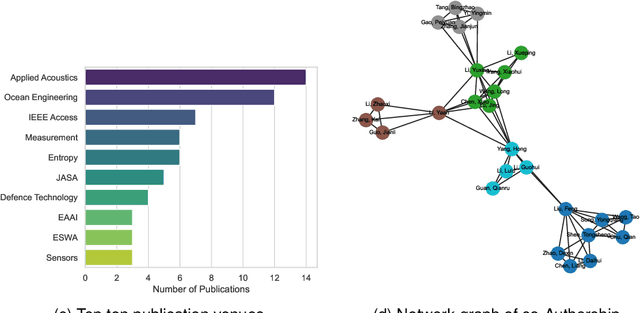
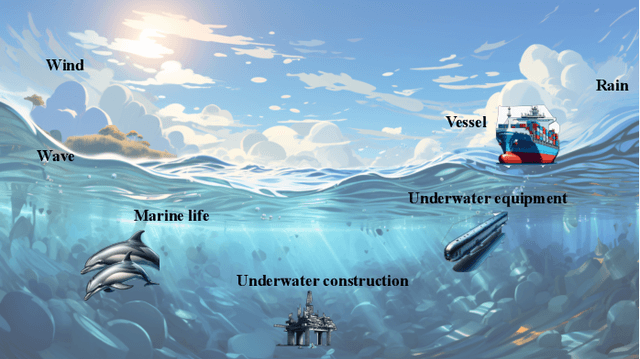
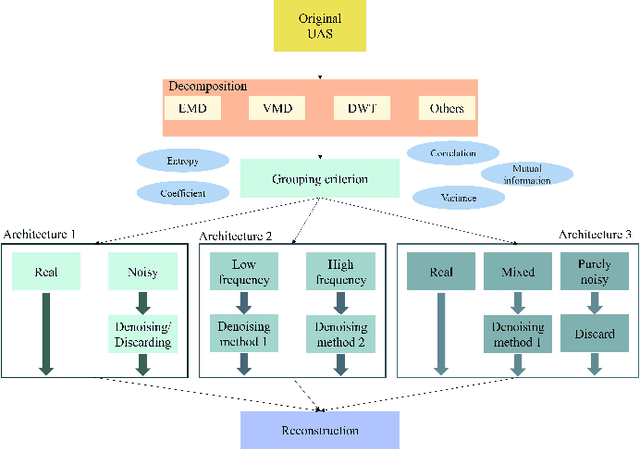
Abstract:This paper comprehensively reviews recent advances in underwater acoustic signal denoising, an area critical for improving the reliability and clarity of underwater communication and monitoring systems. Despite significant progress in the field, the complex nature of underwater environments poses unique challenges that complicate the denoising process. We begin by outlining the fundamental challenges associated with underwater acoustic signal processing, including signal attenuation, noise variability, and the impact of environmental factors. The review then systematically categorizes and discusses various denoising algorithms, such as conventional, decomposition-based, and learning-based techniques, highlighting their applications, advantages, and limitations. Evaluation metrics and experimental datasets are also reviewed. The paper concludes with a list of open questions and recommendations for future research directions, emphasizing the need for developing more robust denoising techniques that can adapt to the dynamic underwater acoustic environment.
A Survey of Distance-Based Vessel Trajectory Clustering: Data Pre-processing, Methodologies, Applications, and Experimental Evaluation
Jul 13, 2024Abstract:Vessel trajectory clustering, a crucial component of the maritime intelligent transportation systems, provides valuable insights for applications such as anomaly detection and trajectory prediction. This paper presents a comprehensive survey of the most prevalent distance-based vessel trajectory clustering methods, which encompass two main steps: trajectory similarity measurement and clustering. Initially, we conducted a thorough literature review using relevant keywords to gather and summarize pertinent research papers and datasets. Then, this paper discussed the principal methods of data pre-processing that prepare data for further analysis. The survey progresses to detail the leading algorithms for measuring vessel trajectory similarity and the main clustering techniques used in the field today. Furthermore, the various applications of trajectory clustering within the maritime context are explored. Finally, the paper evaluates the effectiveness of different algorithm combinations and pre-processing methods through experimental analysis, focusing on their impact on the performance of distance-based trajectory clustering algorithms. The experimental results demonstrate the effectiveness of various trajectory clustering algorithms and notably highlight the significant improvements that trajectory compression techniques contribute to the efficiency and accuracy of trajectory clustering. This comprehensive approach ensures a deep understanding of current capabilities and future directions in vessel trajectory clustering.
Deep Learning-Based Object Detection in Maritime Unmanned Aerial Vehicle Imagery: Review and Experimental Comparisons
Nov 15, 2023



Abstract:With the advancement of maritime unmanned aerial vehicles (UAVs) and deep learning technologies, the application of UAV-based object detection has become increasingly significant in the fields of maritime industry and ocean engineering. Endowed with intelligent sensing capabilities, the maritime UAVs enable effective and efficient maritime surveillance. To further promote the development of maritime UAV-based object detection, this paper provides a comprehensive review of challenges, relative methods, and UAV aerial datasets. Specifically, in this work, we first briefly summarize four challenges for object detection on maritime UAVs, i.e., object feature diversity, device limitation, maritime environment variability, and dataset scarcity. We then focus on computational methods to improve maritime UAV-based object detection performance in terms of scale-aware, small object detection, view-aware, rotated object detection, lightweight methods, and others. Next, we review the UAV aerial image/video datasets and propose a maritime UAV aerial dataset named MS2ship for ship detection. Furthermore, we conduct a series of experiments to present the performance evaluation and robustness analysis of object detection methods on maritime datasets. Eventually, we give the discussion and outlook on future works for maritime UAV-based object detection. The MS2ship dataset is available at \href{https://github.com/zcj234/MS2ship}{https://github.com/zcj234/MS2ship}.
A Decomposition-Based Hybrid Ensemble CNN Framework for Improving Cross-Subject EEG Decoding Performance
Mar 14, 2022


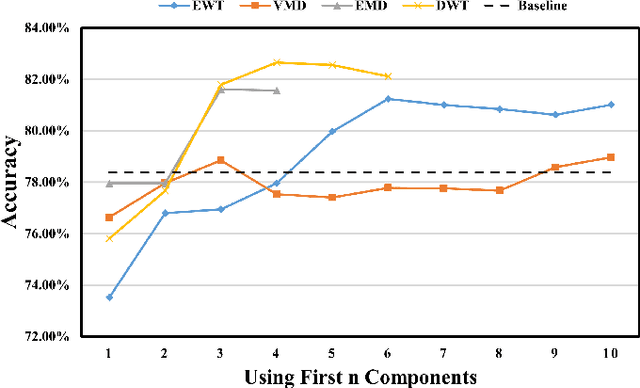
Abstract:Electroencephalogram (EEG) signals are complex, non-linear, and non-stationary in nature. However, previous studies that applied decomposition to minimize the complexity mainly exploited the hand-engineering features, limiting the information learned in EEG decoding. Therefore, extracting additional primary features from different disassembled components to improve the EEG-based recognition performance remains challenging. On the other hand, attempts have been made to use a single model to learn the hand-engineering features. Less work has been done to improve the generalization ability through ensemble learning. In this work, we propose a novel decomposition-based hybrid ensemble convolutional neural network (CNN) framework to enhance the capability of decoding EEG signals. CNNs, in particular, automatically learn the primary features from raw disassembled components but not handcraft features. The first option is to fuse the obtained score before the Softmax layer and execute back-propagation on the entire ensemble network, whereas the other is to fuse the probability output of the Softmax layer. Moreover, a component-specific batch normalization (CSBN) layer is employed to reduce subject variability. Against the challenging cross-subject driver fatigue-related situation awareness (SA) recognition task, eight models are proposed under the framework, which all showed superior performance than the strong baselines. The performance of different decomposition methods and ensemble modes were further compared. Results indicated that discrete wavelet transform (DWT)-based ensemble CNN achieves the best 82.11% among the proposed models. Our framework can be simply extended to any CNN architecture and applied in any EEG-related sectors, opening the possibility of extracting more preliminary information from complex EEG data.
Random vector functional link neural network based ensemble deep learning for short-term load forecasting
Jul 30, 2021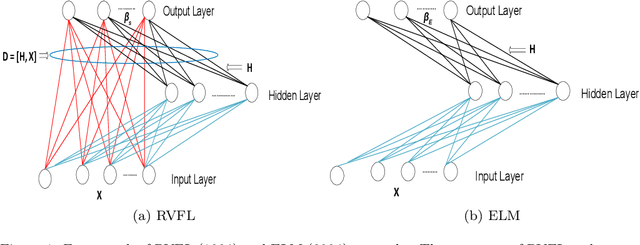
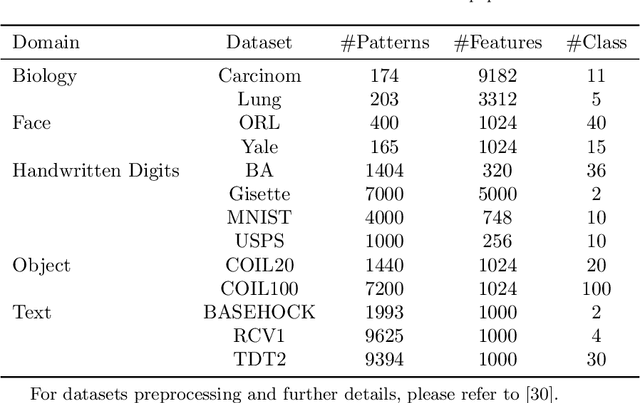
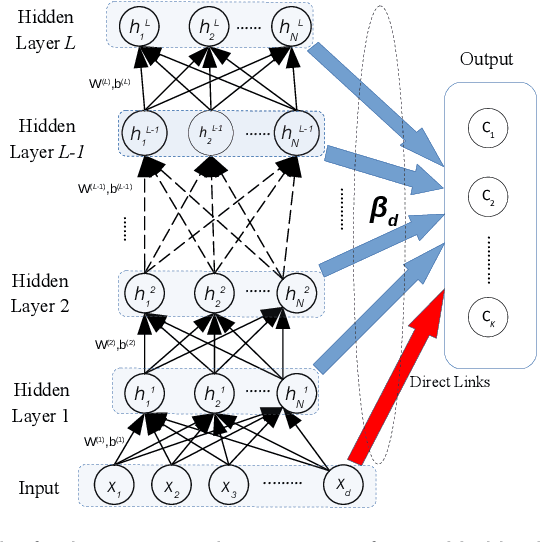
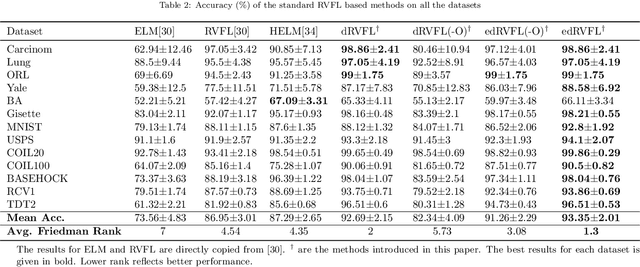
Abstract:Electricity load forecasting is crucial for the power systems' planning and maintenance. However, its un-stationary and non-linear characteristics impose significant difficulties in anticipating future demand. This paper proposes a novel ensemble deep Random Vector Functional Link (edRVFL) network for electricity load forecasting. The weights of hidden layers are randomly initialized and kept fixed during the training process. The hidden layers are stacked to enforce deep representation learning. Then, the model generates the forecasts by ensembling the outputs of each layer. Moreover, we also propose to augment the random enhancement features by empirical wavelet transformation (EWT). The raw load data is decomposed by EWT in a walk-forward fashion, not introducing future data leakage problems in the decomposition process. Finally, all the sub-series generated by the EWT, including raw data, are fed into the edRVFL for forecasting purposes. The proposed model is evaluated on twenty publicly available time series from the Australian Energy Market Operator of the year 2020. The simulation results demonstrate the proposed model's superior performance over eleven forecasting methods in three error metrics and statistical tests on electricity load forecasting tasks.
 Add to Chrome
Add to Chrome Add to Firefox
Add to Firefox Add to Edge
Add to Edge